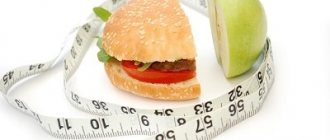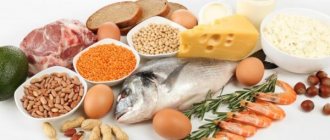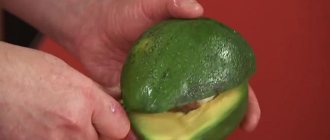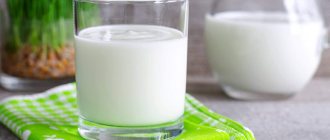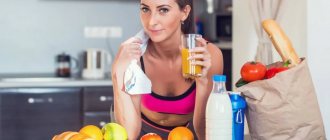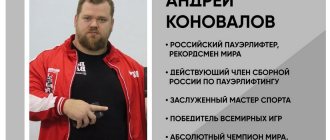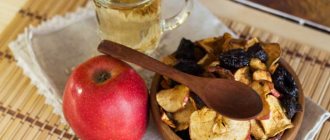Muscle mass is built not in the gym, but in the kitchen and while sleeping. Proper nutrition is a guarantee that all your work will bring results in the form of beautiful muscles. Find out how to eat healthy when you lift!
Beginners want to know how to get pumped, but experienced athletes usually dig deeper and are interested in how to eat properly when lifting in the gym. Indeed, they are right: to build the body of your dreams, you need to supply your body with high-quality fuel to work effectively.
Transforming your body means giving it your all in every workout. And in order for you to have the strength to give your best, it is important to eat right. Find out more about useful and essential macro- and microelements in this article.
Macronutrients are what the diet consists of. These include carbohydrates, proteins and fats. Microelements mean vitamins and minerals that are essential for health and beauty. Microelements are found in everything you eat, and fresh vegetables, fruits and whole grains are especially rich in them.
We will tell you in more detail about the most important elements for an athlete.
Eat carbs when you lift.
Even though carbohydrates get a bad rap in modern society, they are actually the most acceptable source of energy. By eating the right carbs, you'll build tons of muscle without excess fat.
Focus on two types of carbohydrates:
- Complex starchy carbohydrates such as sweet potatoes, brown rice, oatmeal, and whole grain bread
- Complex fibrous carbohydrates, such as broccoli, spinach and other vegetables
Fruits are not only tasty, but also healthy. They contain many vitamins and minerals essential for health. However, they are high in sugar and calories. Considering your goal is to gain muscle mass, you should consume them in moderation. Give preference to fresh fruit, not smoothies or canned goods.
Protein nutrition will help build muscle
When you are lifting, proper nutrition requires the presence of proteins in the diet.
They are responsible for the restoration and growth of muscle tissue. You should get at least 1 gram of protein per kilogram of weight. Excellent sources of quality protein include chicken, lean turkey, egg whites, whole eggs, soy products, tilapia and other white meat fish.
As a supplement, you can take protein supplements - protein shakes and bars. They are convenient and you can always snack on them when you can’t have a full lunch. However, remember: supplements are only an addition to a diet rich in whole, unprocessed foods.
Nutrition rules when gaining weight
In order to gain weight, you need to adhere to the following proportions in nutrients: per kilogram of a person’s weight, you need to consume 2-3 grams of protein, 3-4 grams of carbohydrates and 1-2 grams of fat per day.
Squirrels
Proteins are found in meat, but the structure of the protein can be different, for example, there is vegetable protein, and there is animal protein:
- Plant protein does not have the full range of amino acids for building muscles, and fish meat does not have the full range for building new muscle fibers.
- Animal protein - meat of animals and birds, as well as dairy products, are rich in all the necessary amino acids for the construction of cells. It is believed that red meat is more preferable for athletes, but this is not entirely true. In fact, the best choice would be to use different types of meat in your diet, since the amino acid composition of a particular product is different, as is the percentage of fat. For example, during cutting, an athlete can only eat lean meat and fish.
Carbohydrates
Carbohydrates are also different and not all are suitable for weight gain. Preference should be given to complex or slow carbohydrates, which can be obtained from various cereals. All cereals are healthy and should be included in the diet, but preference should be given to buckwheat and rice cereals.
Also, when gaining weight, it will be useful to consume corn grits due to the large amount of amino acids in its composition.
Legumes should also be included in the menu. Beans, peas and lentils are the best choice, because in addition to carbohydrates, these crops contain vegetable protein.
Fats
Vegetable fats and fiber make up 20% of the total diet and are required for optimal absorption of foods, normal digestive process and normalization of metabolism.
Proper and healthy fats for pumping up muscles
Not all fats are created equal, and to achieve a beautiful, muscular body, it is important to consume only healthy fats and fatty acids, such as Omega 3, which is found in fish and flax seeds, as well as fats from olive oil and avocado. They play an important role in hormone production, skin color and brain function. Fats keep energy levels constant and provide the body with essential nutrients.
The main rule is moderation, since fats are high in calories.
Include natural peanut, olive or almond oil, and avocado in your diet as sources of fat. In addition, fats will come from eggs, meat and fish.
Recently, dietary supplements containing Omega-3 essential fatty acids, namely fish oil and flaxseed oil capsules, have become increasingly popular. They help maintain healthy levels of essential fatty acids in the body.
If you enjoy foods like fish, seeds, nuts and avocados, you won't be short of healthy fats from whole foods. Although supplements containing EFAs and Omega-3s will be a great addition to your diet.
And a few words about “bad” fats. If there are good fats, what are the “bad” ones? Eating such fats in large quantities can cause health problems.
Avoid foods high in saturated fat, found in animal products and some vegetable oils (coconut and palm). Choose low-fat or skim dairy products and trim excess visible fat from meat.
Chemically produced trans fats and hydrogenated oils are used to extend the shelf life of processed foods such as candy, margarine, packaged and convenience foods. Such foods are not at all consistent with proper training nutrition, so try to completely eliminate trans fats from your diet.
You CAN control your belly fat...
But: It depends on what type of belly fat you have. There are 2 types of it: subcutaneous and visceral.
Subcutaneous fat is a fancy name for a large belly and the so-called “lifeline”. You cannot get rid of it on purpose. But if you lose overall weight through a healthy, balanced diet and exercise routine, your belly fat will disappear to reveal gorgeous, toned abs.
Visceral fat is fat located deep inside your torso, mainly around the stomach, intestines and liver. It is also called "visceral belly fat" and has been linked to various health problems. You can hit it by increasing the amount of fiber in your diet and reducing carbohydrates, training more intensely and devoting more time to sleep.
How to eat as a vegetarian while building muscle
Many people don’t know how to eat properly when lifting, and this dilemma especially applies to vegetarians. Even if you don't eat meat or animal products, you can still transform your body and build muscle. Use your imagination, as every meal should provide the body with high-quality proteins.
If you consume dairy products, then increase the amount of protein in your diet through low-fat cottage cheese and yogurt.
In addition, soy products are suitable for vegetarians. They are an excellent source of protein and are available in almost every supermarket. You can also try meat analogues that are made from plant proteins: soy, mushrooms, etc. These products look and smell like real meat. It comes in the form of chicken cutlets, hamburgers and even tacos.
These substitutes will add flavor and variety to your diet, but always read labels to make sure there is no sodium, corn syrup, or saturated fats or hydrogenated oils in the ingredient list.
Many vegetarian and vegan diets include nutritious combinations such as beans and brown rice, natural nut butters, and bread. The main thing is to follow the basic principles of proper nutrition for building muscle mass: eat 5-6 times a day in small portions, choose whole foods and create a small surplus of calories for bulking.
Example of a diet for gaining muscle mass
First meal
The main dish to choose from is oatmeal, scrambled eggs, cottage cheese with additives (raisins, dried apricots, nuts, etc.).
The first meal should be taken as soon as possible after waking up. It is best to choose carbohydrates over proteins for breakfast.
Fruits and baked goods, such as cottage cheese casserole, are suitable as an additional dish.
Second meal
Main course to choose from - meat with cereals, meat with vegetable stew, meat with potatoes.
Canned beans, corn, and peas are perfect additions.
Preference should be given to bakery products made from whole grain flour.
Third meal
The main course is fish or poultry meat with vegetables in any form.
As an addition, a light dessert would be a good option.
Fourth meal
Main course – first course of your choice.
As a supplement to the main portion, you need to add rye bread or bread made from whole grain flour.
Fifth meal
The main dish is vegetables, any meat or cottage cheese.
In addition to main meals, snacks in the form of fruits, nuts or sports nutrition products are required. The main goal of a diet aimed at gaining weight is to minimize the time of hunger, in other words, the feeling of hunger should not be felt throughout the day.
And also read: Proper nutrition (PN) - what is it? Which protein is best for gaining muscle mass? 8 Best Post-Workout Snacks →
How much should you drink when lifting?
What should you drink while on a diet? Water, lots of water. Without adequate hydration, muscle growth is stunted and health and performance can suffer. It is ideal to drink 4 liters of water per day.
Just because you're on a high-calorie diet doesn't mean you can drink milkshakes, sugary juices, or whole chocolate milk in any quantity. The main factor here is moderation. Read food labels and try to stay within your daily calorie allowance.
What portions should you eat to build muscle?
Portion sizes go hand in hand with calories. Don't think that measuring portions is difficult. There is a little trick that makes life easier for many bodybuilders. Each meal should consist of:
- palm-sized portions of protein
- servings of complex carbohydrates the size of two palms
Add some healthy fats 2-3 times a day. This could be 1 teaspoon of flax or olive oil in a dish, or as a snack, spread a piece of bread with natural peanut or almond butter.
Eat 1-2 servings of fruits a day, and don't forget that vegetables can be consumed in large quantities. They don't have much of an impact on your diet, but they are a source of vital vitamins, minerals and fiber!
Top 7 Muscle Building Foods
Today, products for muscle growth are evaluated based on the amino acid digestibility of protein - PDCAAS. The California Dairy Research Foundation has published the top 7 foods that are fundamental to building muscle and are highly digestible.
Milk
One liter of milk contains 32 g of protein, which is incredibly beneficial for muscles. At the same time, milk is literally processed by the body 100%. It performs a tissue repair function, provides the body with amino acids, causing protein synthesis.
A 2008 scientific experiment showed that drinking milk after strength training and strenuous exercise increased lean muscle mass within 12 weeks. This is why you need to eat milk porridge. Such a diet and diet will not only be good for muscle growth and pumping, but will also provide the necessary tissues and cells with a high amount of threonine (an essential amino acid for humans).
Cottage cheese
Proper nutrition for muscle growth should include cottage cheese in the diet.
After all, per 100 g of this product there are:
- 16.7 g of long-digesting protein;
- 17.8 g of healthy healthy fats;
- 2.8 g carbohydrates;
- about 50% water.
It consists of 70% casein. Thanks to this, amino acids in the blood remain at elevated levels for 6 to 8 hours. A sufficient amount of amino acids maintains anabolism until the next diet, which is good for balanced muscle growth. Therefore, between long breaks in meals you need to eat cottage cheese. After intense strength training, you can eat cottage cheese or casein protein. Cottage cheese also contains calcium, which you need to eat for muscle contraction and growth.
To make the effect more vivid, you can pass the cottage cheese through a blender and add the following products to it: milk, banana, raisins, nuts, and so on. These products are also needed for a healthy, beautiful body constitution.
Eggs
Eggs are perhaps the healthiest foods that promote muscle growth. Eggs from chickens raised at home contain 6 g of protein per 50 g of weight.
Jose Mirand proved that egg white has 1300 mg of leucine.
Products containing a huge amount of leucine cause a new formation effect in the muscles - the synthesis of skeletal muscles. In addition, leucine reduces the rate of protein breakdown in muscles.
100 g of yolks contain 3.5 mg of zinc and 200 mg of cholesterol. Zinc is a kind of provocateur in the development of muscle cells. Nutrition involves consuming ten eggs a day: two with yolks and eight without yolks.
Beef
To grow muscle mass, balanced fractional meals involve consuming high-quality protein. It is found in beef. Per 100 g of cooked product there is about 25 g of protein, which is more than enough to strengthen and grow muscles.
You should also eat beef because of its content of heme iron, elastin and fibrillar protein. They perform the function of oxygen saturation, are a strengthening material for interarticular ligaments, and are responsible for the firmness and pleasant elasticity of the skin.
Proper nutrition should include lean beef in the diet so that muscle building occurs without fat. This fact was proven in 2015.
Chicken breast
To build muscle mass, a protein diet plays a vital role. Chicken breast is a complete animal protein. 100 g of product contains:
- 30 g protein;
- 2.1 g fat;
- 52 mg cholesterol.
Such components ideally and effectively allow you to increase muscle mass.
When choosing chicken products for muscle growth, it is better to give preference to the breast, since its other parts contain a lot of cholesterol.
red fish
A nutritional program for muscle growth includes foods rich in protein and amino acids.
A large amount of vitamins, amino acids, micro- and macroelements in red fish. It is tuna, trout and salmon that contain large amounts of healthy omega-3 proteins and fats, which:
- stimulate growth hormones;
- burn excess amino acids.
Chickpeas
Chickpeas are great for promoting muscle growth.
The best option for muscle growth is raw peas. However, you should not eat it raw. You can boil it and make a thick puree. At the same time, valine, leucines, isoleucines, glycine, arginines and methionine do not evaporate. After all, the growth of muscle mass requires that the diet be balanced, without deteriorating metabolism.
What foods should you avoid when building muscles?
When you lift, you should eat in a special way. Avoid refined, “white” carbohydrates such as white bread, white rice, cakes, cookies and candy. They have too many calories and almost no nutrients.
Avoid packaged and processed fast food or ready-to-eat foods, which are loaded with preservatives and bad fats that will ruin your fitness goals. Try not to drink carbonated soda water and fruit juices containing sugar!
Alcohol is allowed only in small doses, and it is better to avoid it altogether. Alcoholic drinks contain empty calories, usually from sugars. But not all types of alcohol contain the same amount of calories and sugar. For example, if you are trying to gain muscle mass, mixed drinks with added sweet juices or cream are not suitable for you.
Choose red wine or cocktails with soda and lime. A few drinks on a special occasion are fine, but try to alternate them with plain water.
Eating in restaurants and pumping up muscles
It's hard to stick to rules when you're meeting friends at a restaurant or forgetting food at home. You realize that it's time to eat, but there are no healthy foods nearby.
- If you find yourself without food and decide to have a meal at a restaurant, just choose the right dishes.
- Order a grilled chicken sandwich without mayonnaise, grilled chicken breasts, steamed vegetables or a baked potato.
- Avoid fried foods, processed or “white” carbohydrates, and creamy or cheese sauces.
- Please order salad dressing separately.
- Instead of soda, give preference to plain water, and a slice of lemon will give it a pleasant aroma and taste.
Try another trick: split the meal with friends or ask them to pack half of it to take home. Thanks to these simple nutritional rules, you will enjoy your food and not destroy everything that you have achieved so hard by pumping up your muscles in the gym.




